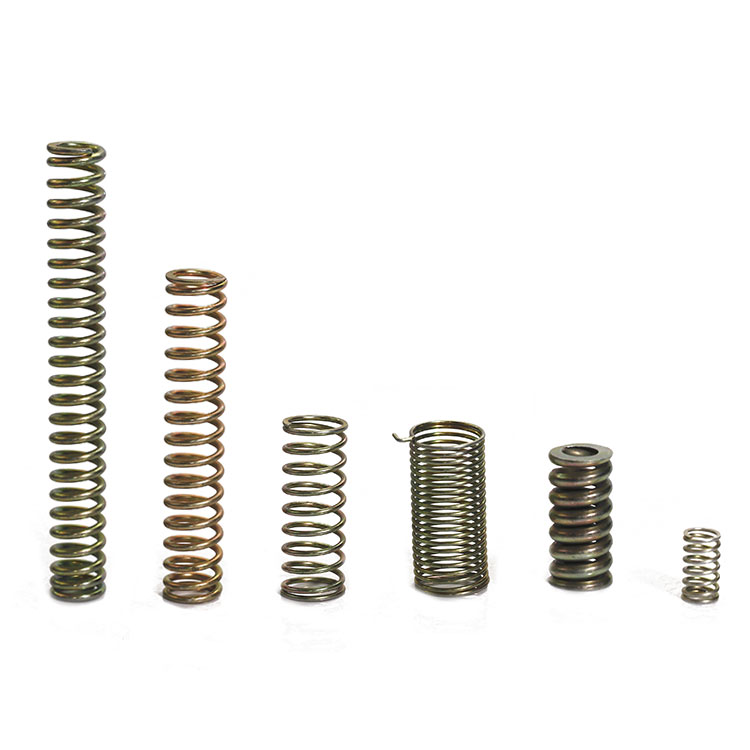News center
SPRING SCIENCE POPULARIZATION
- 分类:Share
- 发布时间:2022-12-05 09:07:17
【概要描述】As we all know, the failure of steel parts mainly includes the following types: elastic or plastic deformation, wear, break and corrosion. According to datas, about 70% of premature failure damage is
SPRING SCIENCE POPULARIZATION
【概要描述】As we all know, the failure of steel parts mainly includes the following types: elastic or plastic deformation, wear, break and corrosion. According to datas, about 70% of premature failure damage is
- 分类:Share
- 发布时间:2022-12-05 09:07:17
- 访问量:
As we all know, the failure of steel parts mainly includes the following types: elastic or plastic deformation, wear, break and corrosion. According to datas, about 70% of premature failure damage is caused by corrosion and wear. About 1/10 of the steel produced in the world every year becomes rust due to corrosion, and about 30% of steel parts or equipment are damaged due to corrosion. Which not only wastes materials, but also often causes accidents such as production stop, personal safety and environmental pollution. Table 1 is the statistics of several major industrialized countries in the world. The direct economic losses caused by metal corrosion in these countries account for about 2-4% of the gross national output value every year, the data is amazing.
The definition of Metal Corrosion: The damage caused by the chemical or electrochemical action of metals with the surrounding medium is called corrosion.
Iron, steel and its alloy ferrous metal, this kind of ferrous metals account for more than 90% of the total output of metals, and their corrosion products are mainly brown-yellow or brown-red rust attached to the surface that can be observed with the naked eye. Therefore, ferrous metals and The corrosion of its products in the atmosphere is also called rust. Corrosion of metals at high temperatures is called oxidation, and its corrosion products are oxide scales, such as hot-rolled steel plates and bars, forgings, and surface oxide scales after heat treatment. Metal damage caused in strong corrosive media such as acids, alkalis, and salts is still called corrosion. Generally, there is no strict difference between corrosion and rust, and metal rust is corrosion.
Classification of Corrosion
(1) Classification by environment
1. Wet corrosion: aqueous solution corrosion, atmospheric corrosion, soil corrosion, chemical corrosion;
2. Dry corrosion: high temperature oxidation, sulfur corrosion, hydrogen corrosion, liquid metal corrosion, molten salt corrosion;
3.Microbial corrosion: bacterial corrosion, fungal corrosion, sulfide bacteria corrosion, algae corrosion, etc.

(2) Classification according to the damage form of corrosion products
1. General corrosion: uniform or uneven distribution on the entire metal surface;
2. Partial corrosion: pitting corrosion, pitting corrosion, spot corrosion, crevice corrosion, filiform corrosion, intergranular corrosion, stress corrosion, hydrogen embrittlement, corrosion fatigue, erosion corrosion, turbulent corrosion, cavitation, etc.
(3) Classification according to the mechanism of corrosion
1.Chemical corrosion: corrosion of O2, H2S, SO2, C12, acid gas, etc., high temperature oxidation, corrosion in non-electrolyte liquids - alcohol, benzene, gasoline, kerosene, lubricating oil, etc.;
2. Electrochemical corrosion:
(1) Micro battery corrosio
(2) Primary battery corrosion: galvanic couple corrosion, stray current corrosion, and concentration cell corrosion.
Such as: atmospheric corrosion in humid air, corrosion in acid, alkali, salt solution and seawater, soil corrosion, corrosion at the contact of different metals, corrosion in other electrolyte solutions.
